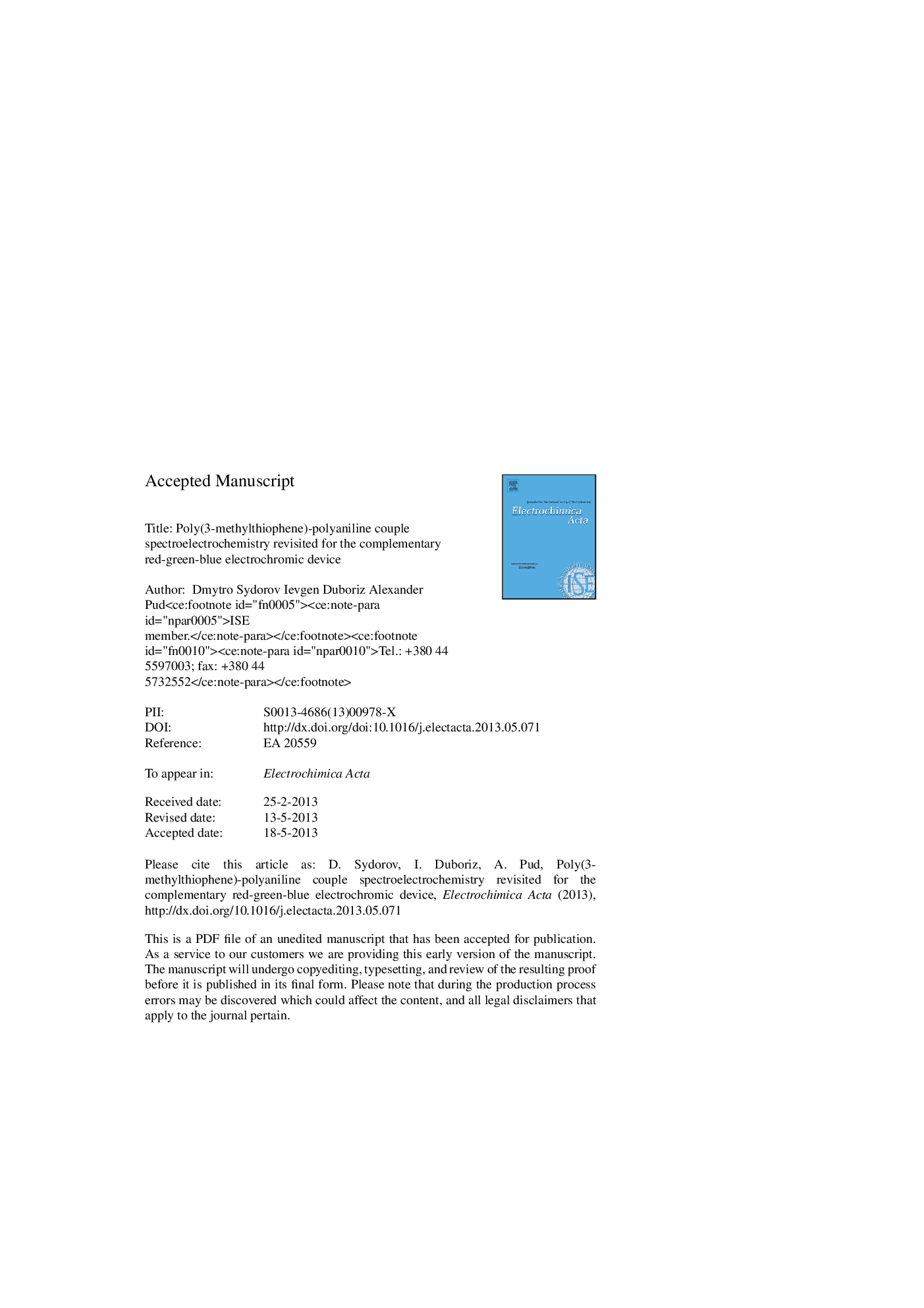| Article ID | Journal | Published Year | Pages | File Type |
|---|---|---|---|---|
| 6616792 | Electrochimica Acta | 2013 | 30 Pages |
Abstract
Spectroelectrochemical properties of poly(3-methylthiophene) (P3MT) and polyaniline (PANI) in aprotic acetonitrile medium have been revisited to better understand their specificity in a wide range of potentials and applicability in a complementary RGB electrochromic device. We find that kinetic limitations of electrochemical reduction of the polymers cause some distortions in their electronic absorption spectra, which are registered at different potentials. These limitations are very substantial for PANI and result in keeping quinoid units in the electrochemically reduced PANI structure. The complete PANI electrochemical reduction to leucoemeraldine state is realized only after 15Â min of electrochemical polarization at â500Â mV (vs. Ag/Ag+). Based on step-by-step polarization and with simultaneous registration of UV-vis spectra of P3MT, we have revealed additional isosbestic point at 765Â nm appearing above 400Â mV (vs. Ag/Ag+), which corresponds to transition of P3MT from polaron state to bipolaron one. Based on additivity of the spectroelectrochemical behavior of the polymers, spectral characteristic of light source and CIE standards we modeled RGB color palette of the complementary electrochromic device (ECD) of transmissive type. This palette is similar to colors of the real ECD prototype, in which electrochemically synthesized P3MT and PANI are working as an ensemble of electrochromic active layers.
Related Topics
Physical Sciences and Engineering
Chemical Engineering
Chemical Engineering (General)
Authors
Dmytro Sydorov, Ievgen Duboriz, Alexander Pud,
